Need a project that’s on the more affordable end of the spectrum? Here are some of the best project cars under 10,000 that you can buy in 2024.
There are few things quite as exciting as starting out with a new-to-you project car. For some people, it’s an opportunity to create the dream version of a particular car that they’ve always desired. For others, however, there are a great many decisions to make, not least when it comes to what car to actually start with. And if we’re talking about you, then here you go – we’ve pulled together a variety of different options, all available to buy for under ten-grand, and there’s a little bit of everything here: whether you fancy a coupé, convertible, sedan, hatchback or off-roader, we’ve got you covered…
Best project cars for under $/£10,000

Honda Integra Type R (DC5)
Performance coupés don’t come a lot more iconic than the Integra. And with the second generation ITR, known as the DC5, the established platform of slinky looks, balletic handling and howling VTEC fury came with the added benefit of the revered K20 engine.
Think of it in essence as a coupé version of the EP3 Civic, with the addition of a handful of extra horsepower, Brembo brakes and an LSD. Whereas the B-Series engine in the older DC2 Integra had a truly savage VTEC crossover, the new K20 engine was far smoother (although entering the VTEC zone was still an event!), the smart i-VTEC system electronically adjusting valve lift, duration and timing to optimise performance. The DC5 also enjoyed a close-ratio 6-speed ’box, stiffer shocks with shorter springs, HID lights, suede Recaros, and a leather Momo wheel.
For buyers in the USA, where the Integra Type R wasn’t officially sold, you’ll be looking for the Acura RSX Type-S – similar car, with a bit less prowess from the factory. But all the same modding rules apply!
These cars have become true modern classics, and there’s a whole world of tuning options out there, from high-end suspension and brake upgrades, race-derived engine mods and – if your pockets are deep enough – hardcore turbo conversions. These cars are awesome in many different ways – and now’s the time to buy, as the values are only going one way…
Pros:
– A proper cult icon
– Massive aftermarket support
Cons:
– A lot have been thrashed
– Not all owners will have kept an eye on oil consumption
Prices: (not old enough to import to US)
Mint: £16,000
Project: £8,500

BMW 335i (E92)
BMW model codes sometimes take a little explaining, so we’ll start there. The E90 was the generation of 3 Series sedan built from 2004-13; the E91 was the Touring version of that model, E92 was the coupé, and E93 was the convertible. What we’re recommending here is the E92, in 335i flavour. What that means is a slinky two-door with a bruising powertrain hidden within. Under the hood of the 335i we find a turbocharged 3.0-litre straight-six; in launch spec this was the twin-turbo N54 engine, replaced by the single-turbo N55 from 2010. Either way you’re looking at a little over 300bhp. This model was the first ever 3 Series with a turbo petrol engine, and the E9x was also the first 3er to come with the iDrive system.
It’s worth seeking out an example fitted with the factory PPK (or ‘Performance Power Kit’), an option which upped power to 320bhp and substantially uprated the cooling system; there was also a limited-run 335is model for the North American market which had 320bhp.
But whichever spec you go for, the options are wide open: a simple remap can unleash an additional 60-80bhp, and once you’ve upgraded the exhaust, induction and intercooler you’ll be in the ball-park of 400bhp. Upgrade the suspension and brakes to suit, and then you can think about the styling. Oh, you’ll have so much fun with a 335i – it really is a heck of a lot of bang for your buck.
Pros:
– Great value for money
– Massive power is easily achievable
Cons:
– Maintenance bills can be high
– Hooligan image
Prices:
Mint: £14,000 / $15,000
Project: £5,000 / $6,500
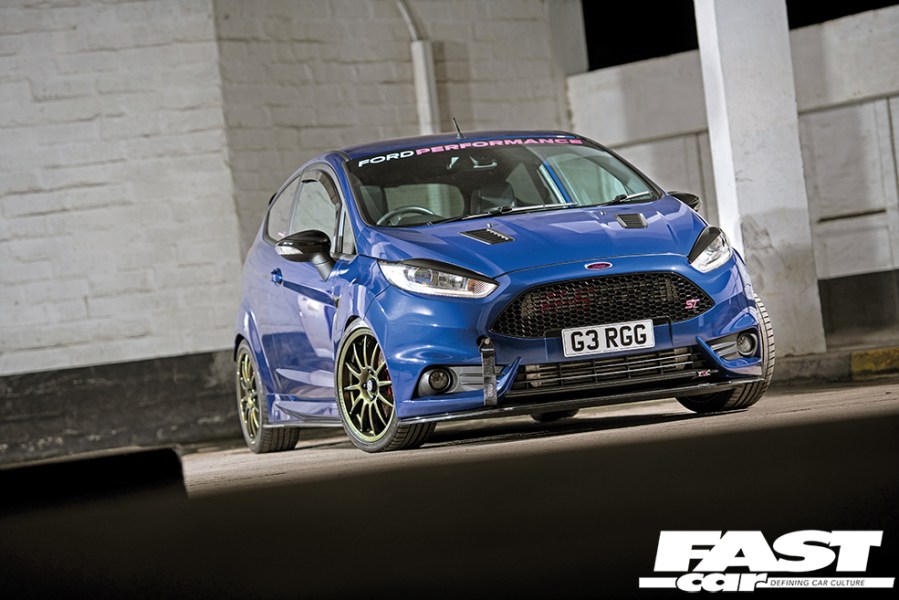
Ford Fiesta ST (Mk7)
The Mk7 Fiesta ST won pretty much every award that it was eligible to be considered for. From 2013 right up to 2017 it was hooking silverware with plaques saying ‘Best Hot Hatch’, ‘Car of the Year’, you name it. And deservedly so, as Ford managed to deftly pull off the Peugeot 205 GTI trick: take a mundane hatchback, shove in a hot engine, and do incredibly surprising things to the chassis. No wonder everyone loves the ST, it’s so universally lovable.
The intelligent little 1.6-litre EcoBoost motor delivers 180bhp and, while it’s as quiet as a church mouse around town, it roars like a lion when you’re approaching the redline. The nimble little chassis dances to your own tune, almost as if you’re willing it into position rather than twiddling that roundy thing in front of you, and there’s an overboost feature on full throttle which’ll give you 197bhp for up to fifteen seconds. And be honest, how often are you on full throttle for more than fifteen seconds…?
An absolute honey of a car, this is guaranteed to go down in history as one of the greats. In twenty-five years’ time, these’ll be going through auctions for the crazy money we’re seeing 205 GTIs selling for now… and today? You can get an early 2013 ST for under five grand!
Pros:
– Massive aftermarket support
– Loads of them about
Cons:
– Er, loads of them about
– Cabin materials not the most premium
Prices:
Mint: £11,000 / $14,000
Project: £4,500 / $8,000
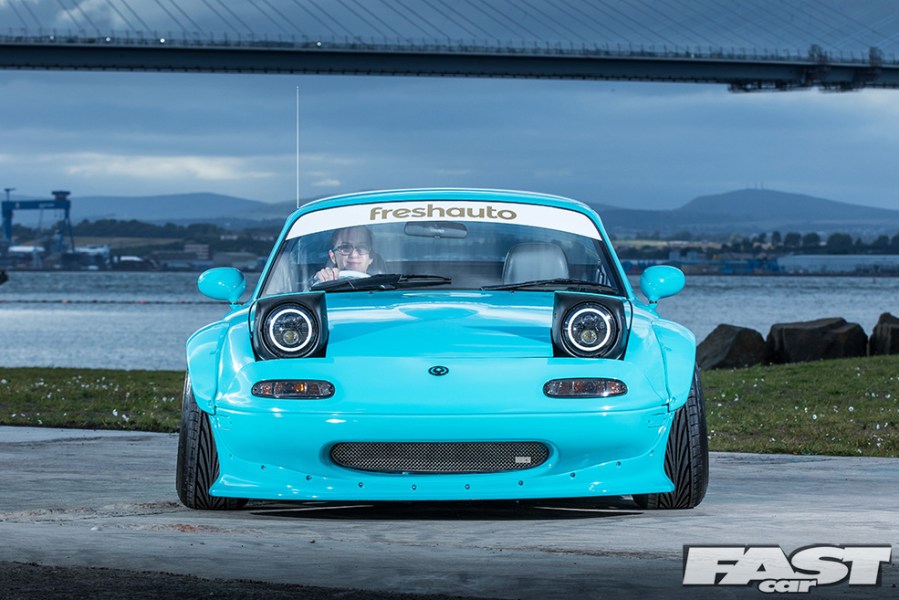
Mazda MX-5 (NA)
When the Mazda MX-5 launched in 1989, it changed the face of the global roadster market forever. Sold as the MX-5 in Europe, Eunos Roadster or Mazda Roadster in Japan, and Miata in the US, it immediately became a global sensation. It came with a perky little twin-cam motor – a choice of 115bhp 1.6 or 131bhp 1.8, the difference largely conceived for Japanese tax reasons – and probably the best gearbox ever made. You sit low and snug, and steer it with your hips like a Caterham. Best of all, with that body design so blatantly stolen from the Elan, it’s now genuinely possible to buy what is effectively a budget Lotus that will always be faultlessly reliable, for far less than the cost of a rusty Fiesta. Look as hard as you like, you won’t find a downside. This car is an everyman legend.
Specs and Special Editions
Early NAs came with the B6ZE(RS) engine, a 1,598cc screamer with electronic fuel injection, lightweight crankshaft, and an aluminum sump with cooling fins – the motor produced 115bhp stock. Later 1.8 cars enjoyed the BP-ZE engine – this had a forged crank, piston oil squirters, and Variable Inertia Charging System (VICS), which featured a solenoid that activated at high revs to magically increase horsepower; peak power with this motor was 131bhp. JDM and USDM cars had the option of an LSD, and there were many, many special editions with varying levels of trim and equipment – we’ve counted 77 special editions, but there may be more!
Some highlights include the V-Spec – a JDM model in British Racing Green with tan leather and a Nardi wheel – and the Merlot, a UK 1.6 in wine red, as well as the iconic BBR Turbo which had 152bhp. So there’s loads of choice out there – just make sure you inspect very, very carefully, as these cars really do love to rust.
Pros:
– Wonderfully tactile to drive
– Loads of tuning options
Cons:
– Can rust like crazy
– Increasingly subject to scene tax
Prices:
Mint: £13,000 / $16,000
Project: £3,000 / $5,000
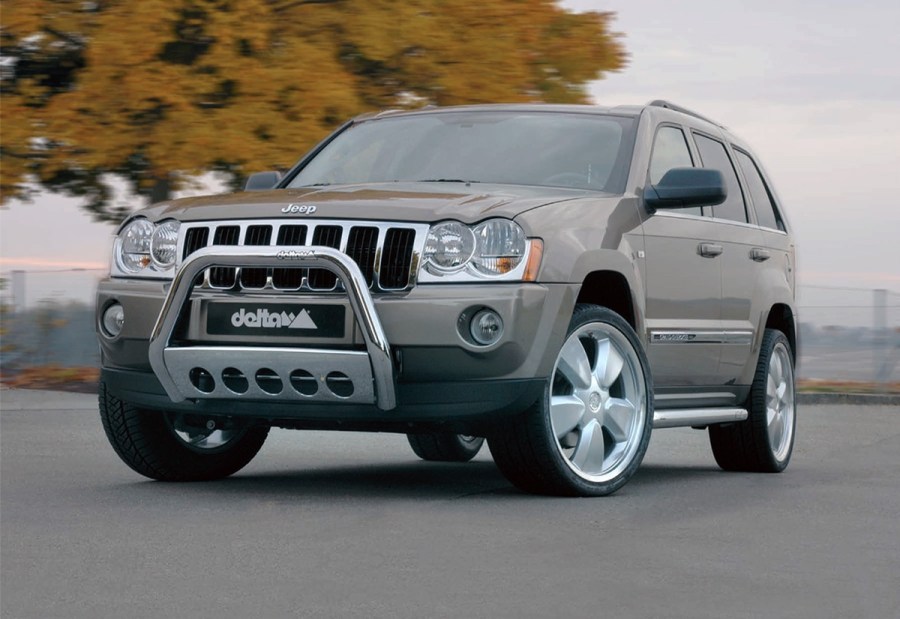
Jeep Grand Cherokee (WK)
The Jeep Grand Cherokee is a machine with a very interesting back story. The first of Chrysler’s Jeep-branded projects (following their 1987 buyout of AMC), this was a mold-breaking luxury SUV/off-roader which featured unibody construction while most of its contemporaries were still body-on-frame. This made it safe, tough and capable, but the real party piece was the cabin, which wasn’t austere like a Land Rover – it was kitted out with generously padded leather seats, digital display screens, and a smorgasbord of standard-fit equipment. And curiously, while domestic models were built in Detroit, the ones on sale in Europe were assembled in Austria by Magna Steyr – the outfit that currently builds Mercedes G-Wagens among much else.
WK Specifics
The one we’re looking at here is the third-generation Grand Cherokee, designated ‘WK’, which was sold from 2005-10. These rugged beasts are looking like outstanding value right now, and there’s a broad range of engine options to choose from: if you’re planning on a hardcore off-road build, you might like to choose from the torquey PowerTech engines – either 3.7-litre V6 or 4.7-litre V8 – or, if you’re in Europe, the 3.0 V6 CRD, which was a turbo-diesel built by Mercedes-Benz. If this is your direction, you’ll find a whole world of off-road options on the aftermarket, from lift kits to roof tents.
Alternatively, you may be after a stealthy performance project, in which case you’ll be pleased to learn that there was a Hemi version of the Grand Cherokee, fitted from the factory with a full-fat 5.7-litre Hemi V8… and there was even an SRT-8 version, with a 6.1-litre Hemi and 420bhp. (Although you may struggle to find one of those under ten-grand…) Whichever one you choose, this is an affordable American icon with endless modding possibilities.
Pros:
– Solid and robust
– Very well-equipped
Cons:
– Relatively expensive to run
– Subject to a few recalls, so check the history
Prices:
Mint: £13,000 / $18,000
Project: £3,000 / $3,000
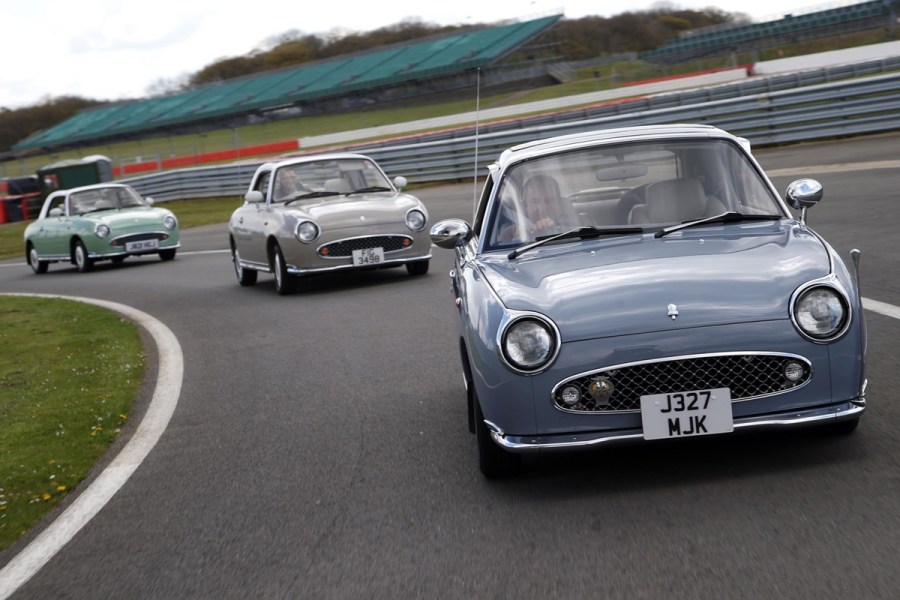
Nissan Figaro
Who doesn’t love a Figaro? These are ridiculously cute cars with a keen cult following, and they’ve reached an age now where they’re doubly retro; initially styled as a throwback to 1960s design, they’re now old enough that they’ve become classic cars in their own right.
The story is an intriguing one. Nissan launched the Figaro at the 1989 Tokyo Motor Show as one of four ‘Pike cars’ (so-called as they were built by a special projects group known as the Pike Factory), the other three being the Pao, Be-1 and S-Cargo models. The Figaro was based on the Micra/March platform, sold exclusively in Japan through Nissan Cherry dealerships, and available in four ‘season’ body colors – Emerald Green for spring, Pale Aqua for summer, Topaz Mist for autumn and Lapis Grey for winter. And it’s a true testament to this car’s charm that it’s became such a cult icon, despite having only been in production for a year; a mere 20,073 of these cars were built in 1991, but that was enough to ensure a lasting legacy.
These have been a very popular import model for the UK and Ireland for many years now, and their age means that they’re starting to creep into the USA too. And the fact that it’s based on the Micra platform is hugely helpful – because it may have a 1.0-litre turbo motor mated to a 3-speed auto gearbox, but there’s very little to stop you swapping in, for example, the 1300 twin-cam from the Micra SR, along with its manual ’box – and Micras were popular rally cars too, so there’s a lot of sporting potential hidden here…
Pros:
– Endlessly charming
– Simple to work on
Cons:
– Not many of them about
– Quite slow as standard
Prices:
Mint: £13,000 / $18,000
Project: £3,500 / $9,500
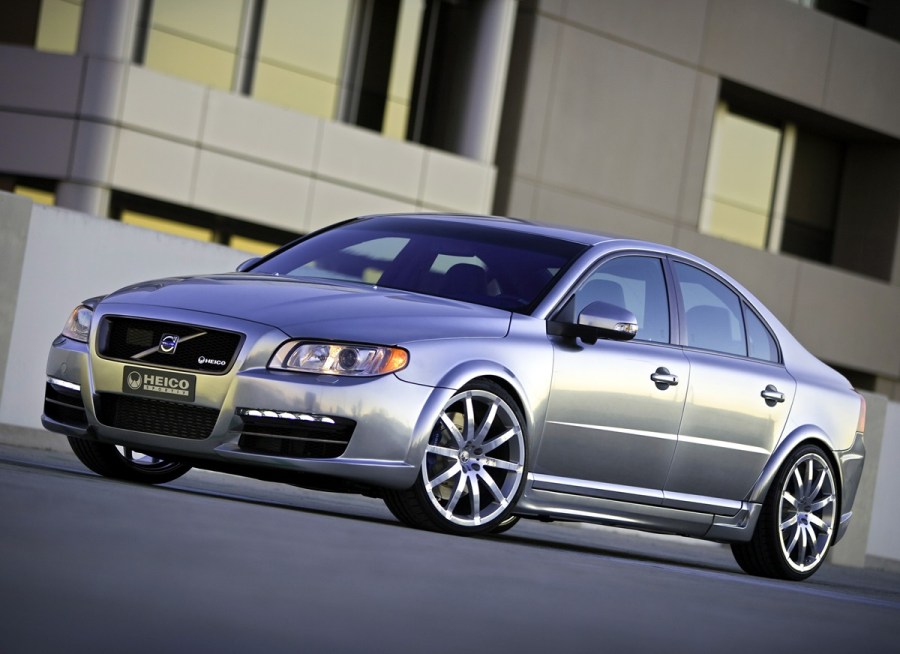
Volvo S80 V8
What could be more sensible than a great big Volvo? Well, that’s what people will think anyway, as you cruise stealthily past in your seemingly grown-up choice – but the V8 version of the S80 was actually a bit of a lunatic.
The S80 was Volvo’s flagship saloon, the second-generation on sale from 2006-16; a big and imposing thing offering Jaguar-like equipment levels with architect-spec dependability. But best of all, the engineers went a bit crazy while the accountants were clearly having the afternoon off, and this was the first Volvo sedan to enjoy the Yamaha-built 4.4-litre V8 under its unassuming nose. We’re talking 310bhp, a sub-6-second 0-62mph time, and a subtle rumble that won’t give you away but will give your bowels a little shimmy every time you flex your right ankle.
It’s lavishly equipped and oh-so comfy, so it’d make for a superlative wafter – but what we’re really seeing here is potential. With the right intake and exhaust upgrades, that Yamaha V8 will sound absolutely magnificent, and then the world’s your oyster when it comes to aesthetics – we reckon VIP is the way to go, getting it low and sleek over some big high-end rims.
Pros:
– Solid and dependable
– Fully loaded with toys
Cons:
– Perhaps not the coolest brand
– A bit thirsty
Prices:
Mint: £14,000 / $12,000
Project: £9,000 / $6,000
Need some more inspiration? We recently completed our own Honda Civic Type R FN2 project car. Watch the build series over on the Fast Car YouTube channel!




